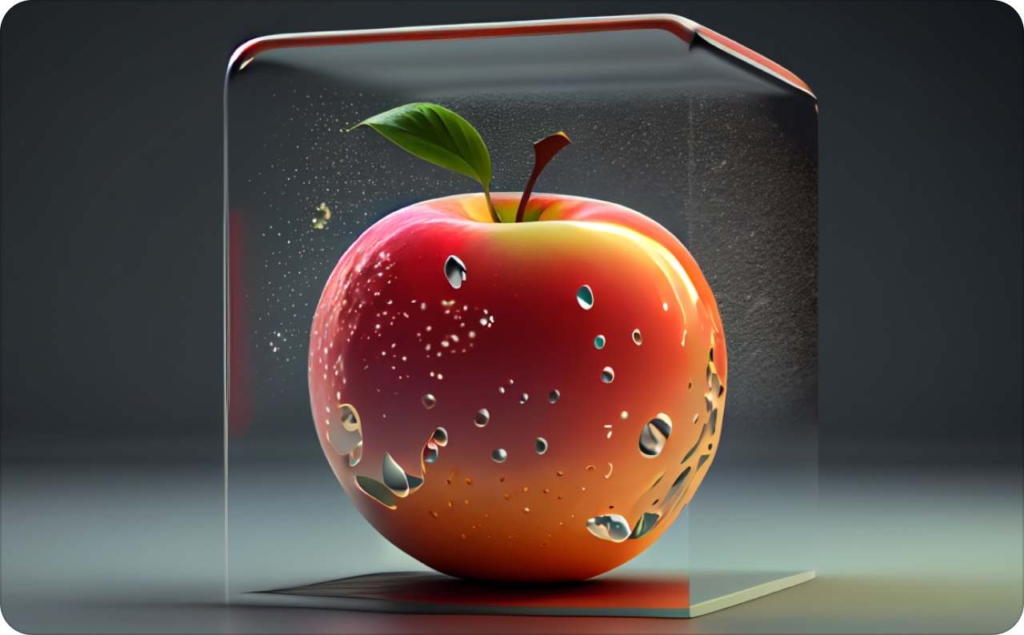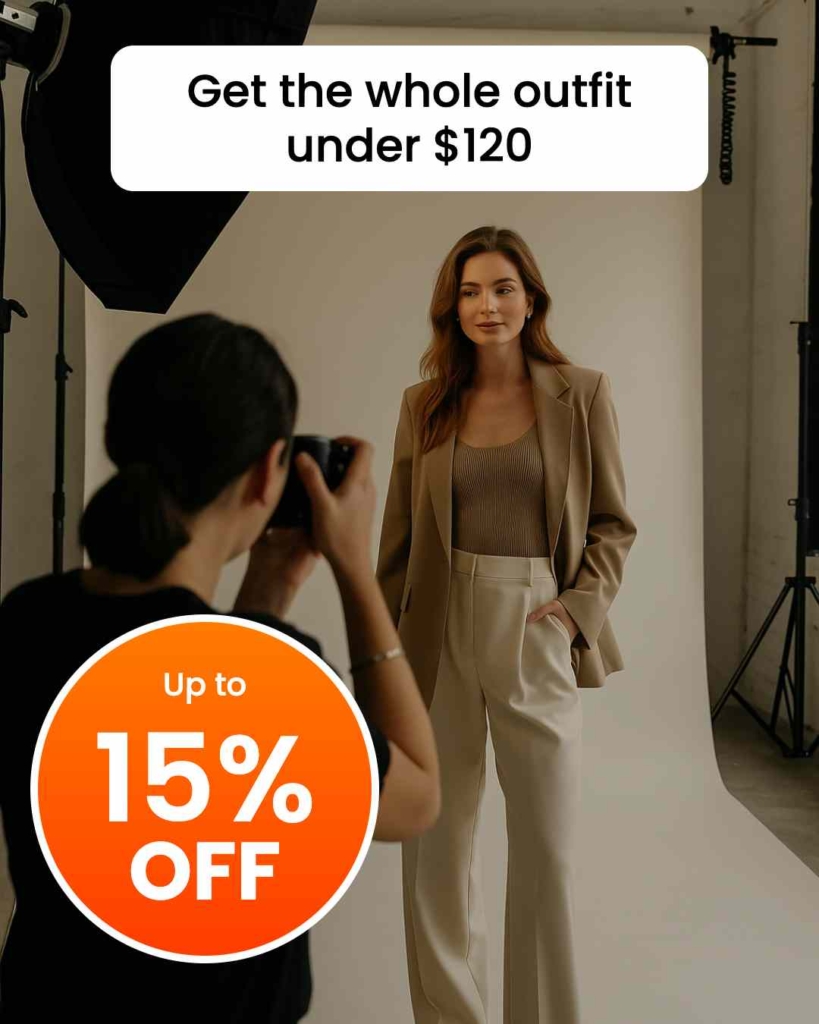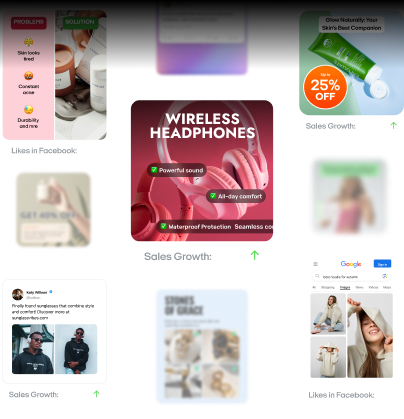Creative clothing ads: Top examples & strategies to inspire your campaign
Curious what makes the most eye-catching clothing ads so irresistible? Zeely AI studied top industry trends and is now sharing the insights to help you craft ads that truly inspire and sell.
Fashion brands aren’t just selling clothes, they’re fighting for attention, emotion, and identity. Creative clothing ads drive real performance by combining visual storytelling with strategic execution. They engage, convert, and build long-term brand equity.
If you’re not prioritizing video formats, especially short-form, you’re missing out. In fact, 93% of marketers report a positive ROI from video, with shoppable video driving 3.4× more sales, making it the top-performing format for growth in 2025.
So what makes a clothing ad effective? It’s purpose-driven design. The best campaigns use powerful visuals, authentic voices, and platform-native formats to resonate and perform.
If you’re a brand marketer, e-commerce founder, or creative director, this guide gives you what competitors don’t.
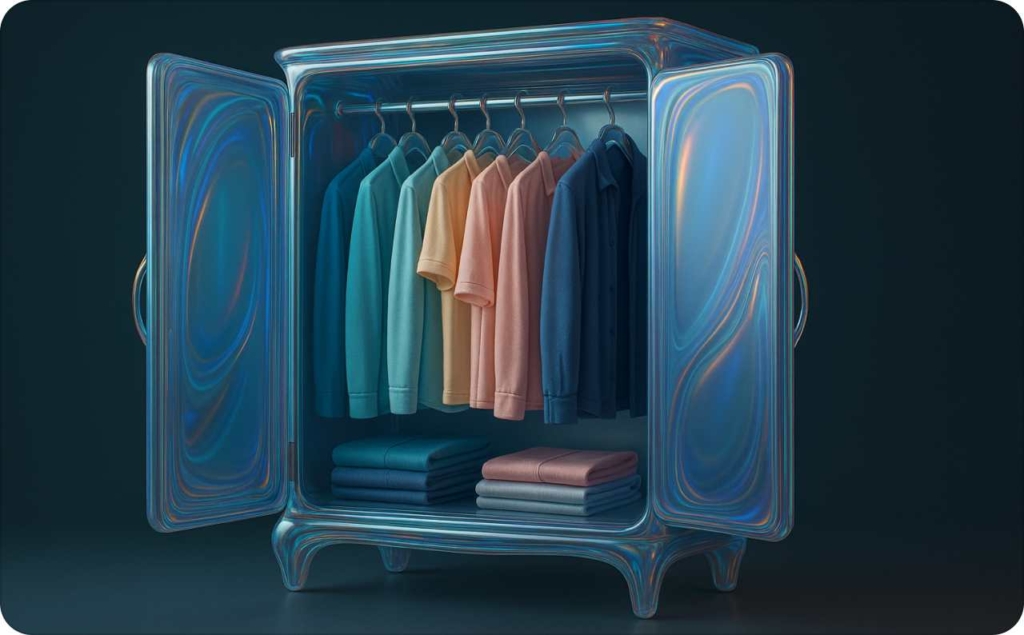
Breakdown of high-performing formats for clothing advertisement
Carousel, video, and shoppable ads are the top-performing formats for fashion campaigns in 2025, because each aligns with specific user behaviors and buyer intent. When you understand what each format does best, you can match it with your campaign goals and turn creative execution into real results.
Let’s break down exactly how these ad formats work, why they convert, and how you can build them for maximum impact.
Carousel ads: Swipeable product discovery that converts
What it is: Carousel ads are multi-frame ad units that allow brands to showcase several images or videos within a single ad, each with its own headline, description, and call-to-action.
Where it appears: Commonly used on platforms like Instagram, Facebook, and Pinterest, carousel ads are native to mobile-first feeds and swipe gestures.
What it’s for: Ideal for displaying product collections, multiple SKUs, or styling options, allowing users to explore visually and interactively without leaving the ad.
Ad formats supported:
- Image-only carousels
- Video-in-carousel mix of static and motion
- Dynamic Product Ads with auto-filled product content from catalogs
Why it works: Carousel ads simulate the real-world browsing experience, like flipping through a lookbook, while giving users control over their journey. When combined with DPAs, they personalize product selection based on past browsing, boosting relevance and CTR.
Best practices for fashion carousels:
- Start with a statement piece to hook swipe behavior
- Sequence with logic and think full outfits, color themes, or “before/after” style pairings
- Maintain aesthetic consistency and use similar lighting, backgrounds, or styling
- Use swipe-native CTAs like “Shop this look” or “View collection.”
Carousel ads increase engagement and relevance by offering users a swipeable, personalized discovery path.
When to use: Best suited for mid-funnel campaigns, where users are comparing products and looking for visual inspiration before deciding.

Photo source: Grace Boutique California carousel ad in Meta Library
Video ads: Dynamic storytelling that drives emotional connection
What it is: Video ads are motion-based creatives that show products in action, often using music, voiceovers, or subtitles to tell a story in short-form formats.
Where it appears: Video ads dominate on TikTok, Instagram Reels, Facebook Video Feeds, and YouTube Shorts, all optimized for vertical, full-screen viewing.
What it’s for: Best for showcasing product movement, building brand identity, and generating emotional resonance. Video helps users imagine the product in real life, how it fits, flows, and feels.
Ad formats supported:
- Short-form vertical (9:16) video ads
- Shoppable video ads with in-video tagging
- Influencer-led or user-generated content repurposed as paid ads
Why it works: Studies show video ads drive 3.4× higher sales than static content in fashion, largely due to their ability to communicate context and emotion quickly.
Best practices for fashion video ads:
- Hook viewers fast, use motion, emotion, or recognizable faces in the first 3 seconds
- Design for mute-first consumption, overlay captions, headlines, and visual CTAs
- Show real-life context, lifestyle scenes, outdoor shoots, or influencer reactions
- Include product interaction, zipping, twirling, or fitting shows functionality and feel
Video ads build emotional relevance and brand trust by showcasing how clothing looks and moves in the real world.
When to use: Use video ads at the top or mid-funnel to drive awareness and brand recall, or pair with retargeting to bring back engaged viewers.
Shoppable ads: Frictionless checkout, instant conversion
What it is: Shoppable ads are interactive ads that allow users to browse and purchase directly within the platform, using product tags, embedded links, or instant checkout functionality.
Where it appears: Prominent on Instagram Shop, TikTok Shop, Facebook Marketplace, and Pinterest Shopping Pins.
What it’s for: These ads compress the buyer journey by turning inspiration into action, making it possible to go from scroll to sale in just a tap.
Ad formats supported:
- Product-tagged image or video ads
- Live Shopping videos
- In-feed product tiles with direct checkout
- Click-to-shop CTAs like “Buy now,” “Get it instantly”
Why it works: Shoppable ads reduce cart abandonment by shortening the conversion path and removing redirects, clicks, and confusion. Instagram reports up to 37% higher conversions when product tags are used in lifestyle content.
Best practices for shoppable fashion ads:
- Use natural styling, show products on people, in motion, or in curated outfits
- Tag clearly and sparingly, 1–3 products per post to avoid visual overload
- Add urgency, with overlays like “New drop,” “Limited quantity,” or “Trending now”
- Keep copy minimal and action-driven, “Tap to try,” “Get the look,” “Only a few left.”
Shoppable ads drive purchase completion by integrating checkout directly into the discovery experience.
When to use: Ideal for bottom-of-funnel and conversion-focused campaigns, especially for limited-time collections, exclusive drops, or high-intent retargeting.
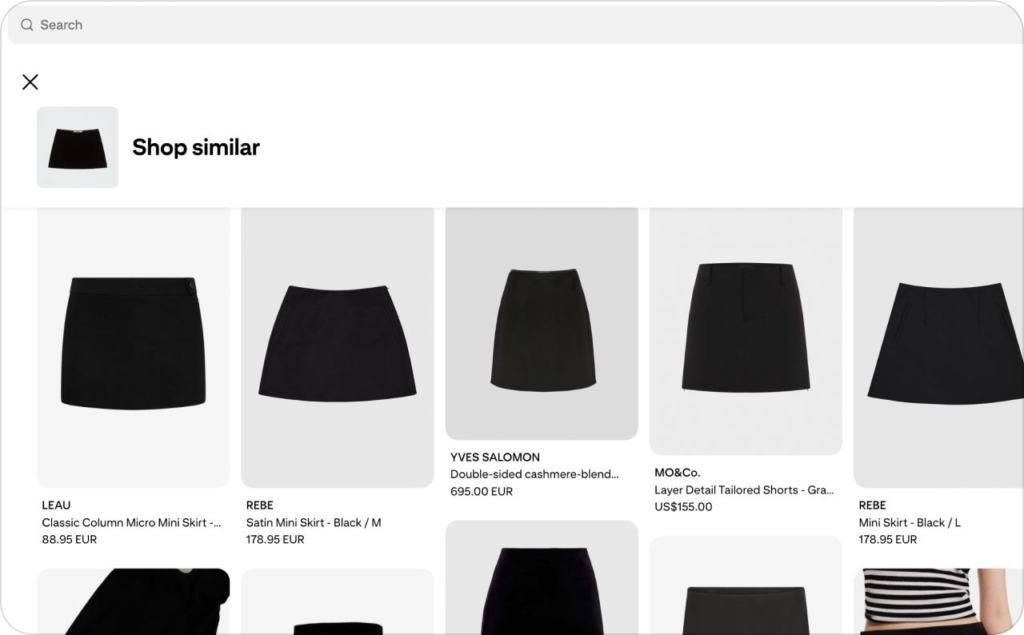
Photo source: Pinterest
Creative strategies that make apparel advertising stand out
High-performing fashion ads tell stories, build community, and trigger timely action. Whether you’re scaling a DTC brand or launching your next campaign on TikTok, these proven strategies turn browsers into loyal customers. Let’s break down what makes them work and how to implement them effectively.
Storytelling & brand identity
Storytelling in clothing ads is a conversion driver. When your brand narrative mirrors your audience’s lifestyle and values, your ads stop being “content” and start feeling like a connection.
Clothing ads gain traction by embedding authentic narratives into lifestyle visuals. This is where emotional branding meets performance marketing.
High-converting apparel ads often lean on:
- Lifestyle imagery that reflects real use, for example commuting in a raincoat, brunch in a summer set
- Customer personas that frame the ad story, like “creative freelancer” or the “urban minimalist”
- Aesthetic cohesion between brand tone, message, and visual identity
Social platforms like Instagram and TikTok reward immersive storytelling with higher engagement rates, especially when videos or carousels capture the full arc, from need to solution, style to story.
To stand out in a saturated market, you need to map your values to your visuals. Think less “about the product” and more “about the life the product enables.”
Social proof & community validation
Social proof builds trust faster than any tagline. In fashion advertising, that means turning your customers into your content creators and letting their voices validate your value.
User-generated content, verified reviews, and customer testimonials help clothing brands reinforce trust and counteract skepticism that often surrounds paid ads.
Here’s how to do it right:
- Feature diverse customer photos or videos in your ads to reflect real users and real fits
- Display social comments in your creative, use platform-native overlays like “5K saved this look” or “@xyz bought it twice”
- Incorporate testimonial quotes with direct results: “Perfect fit, wore it to 3 weddings already!”
Social validation reduces hesitation, especially in high-CPC verticals like fashion. When your audience sees people like them using your product, they’re more likely to convert.
Urgency & promotional triggering
Urgency, when used strategically, drives immediate action. In fashion e-commerce, where cart abandonment often exceeds 70%, a gentle push can make all the difference.
Clothing ads increase conversions by embedding urgency signals that shorten the decision window.
Effective urgency triggers include:
- Countdown timers during flash sales or capsule launches
- Low stock indicators like “Only 3 left in this size”
- Time-limited CTAs such as “Ends tonight” or “24-hour drop
FOMO is a powerful lever, especially when paired with emotional visuals. Limited-edition releases, seasonal exclusives, or event-driven collections “NYE looks only” perform exceptionally well when urgency is built directly into both the creative and the caption.
Just make sure urgency feels informative, not manipulative. The goal is to empower shoppers to act, not pressure them.

Photo source: Straye Shoes Sale carousel ad in Meta Library
Personalization & dynamic product discovery
In fashion ads, one-size-fits-all doesn’t convert. Personalization ensures your audience sees products that speak to their style, behavior, and intent.
Dynamic product ads and retargeting tools allow brands to serve tailored recommendations based on real-time signals like browsing history, cart behavior, and purchase data.
Tactics to drive success with personalized fashion ads:
- Segment audiences by interest, past engagement, or lifecycle stage
- Use real-time data to surface relevant product combos try “You viewed these joggers, now complete the look with this hoodie”
- Implement dynamic retargeting to recover lost sales with contextual offers try “Still thinking about this?”
DPAs shine on platforms like Facebook, Instagram, and Google Shopping. They allow you to serve relevant products without needing new creative for every segment, scaling your personalization without scaling workload.
When done right, personalization enhances the shopping journey, strengthens user trust, and raises your return on ad spend.

Photo source: Abercrombie & Fitch
Influencer-led brand trust
Influencers bring credibility, and clothing ads perform better when that trust is part of the message. Whether it’s a micro-influencer with a niche fashion tribe or a celebrity endorsement, real voices build brand affinity.
Fashion brands generate trust through influencer partnerships that align with audience identity.
Here’s how to get it right:
- Match influencer style with your brand’s aesthetic, because alignment matters more than follower count
- Co-create content, rather than forcing branded scripts
- Track outcomes beyond likes: clicks, conversions, brand lift
Authenticity is non-negotiable. Modern audiences can spot forced partnerships instantly. Instead, think of influencers as community extensions — ambassadors who validate your brand by wearing, not just promoting.
For campaign success, consider integrating influencer content into your paid ad strategy. UGC-style video from a trusted creator often outperforms polished brand shoots.
Platform-native creative innovation
Today’s best clothing ads are built for them. Native-first formats, such as Reels, Stories, TikToks, AR try-ons, capture attention by blending into the content users already love.
Clothing brands drive higher engagement by designing platform-native ad experiences that match user expectations and behavior.
To innovate while staying native:
- Use TikTok-style edits with quick cuts, trending sounds, real-world use
- Design AR try-ons for glasses, jackets, or jewelry to allow virtual sampling
- Leverage Reels and Stories for immersive, narrative-first product showcases
Immersive formats often outperform static ads on mobile-first platforms. They invite. Platforms like TikTok and Instagram prioritize ad units that keep users engaged, so aligning with their visual grammar gives you more algorithmic visibility.
Keep in mind: what works on Meta might flop on TikTok. Native success starts with understanding the user mindset on each platform and designing for it from frame one.
Expert tips to create your own high‑impact clothing ads
You want your ad campaigns to be strategic yet simple, focused on your target, message, and performance. Follow the four-step pathway below to create ads that resonate, convert, and scale.
How to identify your target persona for clothing ads
You define your ideal customer by combining demographic data and customer behavior in Meta Ads Manager or Google Analytics.
Your quick task: build a Lookalike Audience using your top 1% purchasers. According to WordStream, campaigns with precise audience targeting cut CPA by 30%. Don’t create a wide-cast audience, niche targeting boosts relevance and cuts wasted spend.
Pitfall to avoid: Broad audiences reduce message alignment. If performance lags, segment by interest or purchase frequency until CPA improves.
How to craft persuasive messaging & CTAs for fashion ads
You craft ad messages that connect emotionally and highlight distinct values. Your quick task: write three headline variations for your hero product: one emotional “Stay warm, forever”, one functional “Water‑resistant parkas under $120”, and one urgency-based “Limited stock: shop now”. Then test each in separate ad sets.
A denim label tested two creative styles: ‘stretch & fit’ vs lifestyle pro shoots. The benefit-led ad drove a 33% higher conversion rate, showing clarity wins over style.
Pitfall to avoid: Generic copy gets skipped. Your message must promise a clear benefit, followed by a direct CTA “Shop now,” “See fit”.
How to test and optimize clothing ad performance
You conduct structured A/B testing on each element — audience, copy, visuals — to inform your ad updates. Your quick task: allocate a minimum of 1,000 impressions per variation before comparing CTR, CVR, CPA, and ROAS.
A boutique outerwear brand tested ads featuring lifestyle imagery versus product close-up. The product shot ad delivered a 28% lower CPA, and the team shifted 60% of budget to that creative.
Pitfall to avoid: Don’t change multiple variables at once. Test one element per campaign to measure impact directly.
Make fashion ads that sell with AI
Your clothing deserves more than generic posts. Whether you’re launching a new drop, running a seasonal campaign, or scaling your store, Zeely helps you create sharp, polished ads in minutes with ads generator, no designers or agencies needed with ads.
From streetwear to swimwear, you can turn your lookbook into real conversions with scroll-stopping visuals, tailored messaging, and campaigns that feel as fresh as your latest release.
Why it works for clothing and fashion brands
- Quick creative turnaround. Design sleek static ads in seconds and stunning product videos in under 7 minutes, no editing tools required
- Boost your sales. Craft campaigns that grab attention and drive purchases, whether you’re promoting a new arrival, flash sale, or collection
- Do more with less. Skip the production crew. Build everything in-house and stay on brand without breaking your budget
- Sell everywhere your customers are. Launch made-for-platform ads on Instagram, Facebook, TikTok, YouTube, Google, and more
- Test styles, angles, and messages. Effortlessly create up to 20 ad versions for a single product, which is great for testing colorways, taglines, or formats
What’s inside for fashion marketers
- Templates made for apparel. Choose from over 100 layouts for product drops, promos, and storytelling, all crafted for the fashion world
- High-impact messaging tools. Quickly generate headlines, taglines, and product blurbs that sound like you and not like a sales robot
- Dynamic video presenters. Bring your collection to life with lifelike video presenters without photoshoots or talent contracts
- Design editing made easy. Clean up your visuals, crop images, and tweak colors to match your store’s look
- Post straight to your socials. Connect to Facebook and Instagram to go live with your campaigns instantly
- Tell your brand story beautifully. Use built-in storytelling prompts to create short videos that show off your values, fit, and style vibe
Built for brands that are growing
Whether you’re just launching or scaling a global fashion label, Zeely gives you the tools to market like a pro without the overhead. Plans start at $29.95/month, with higher tiers unlocking even more visuals, videos, and brand-building assets.
Why fashion marketers love Zeely
You don’t need to be a designer or content studio to make standout fashion ads. With Zeely, your best ideas become campaigns quickly, affordably, and without creative roadblocks. From bold basics to high-end couture, Zeely helps you turn your collection into sales — one great ad at a time.
Overview of successful clothing ad campaigns
The leading clothing ad campaigns share one thing: they begin with a strong narrative and back it up with measurable performance.
Puma’s “Forever. Faster.” — athletic edge in full motion
Puma wanted to reinforce its image as a high-performance sportswear leader. Their 2024 campaign was their biggest global brand effort in a decade, spanning TV, social, OOH, and more, designed to cement Puma as the “Fastest Sports Brand” in the world.
They featured athletes like Neymar Jr., Usain Bolt, and Breanna Stewart in fast-cut videos optimized for Instagram Reels and Facebook Stories. A platform-specific decision: motion-first content drives more engagement than static images.
Athlete-led video posts saw 2.1× more engagement, and video creatives lifted conversion rates by 30% compared to static ads. Puma launched short social videos during Euro 2024 and the Olympics. They tested two versions: standard showreel vs. athlete-centered motion. The athlete videos drove significantly higher click-through rates and store visits.
Why this matters to you: When speed and performance define your brand, leverage platform-specific formats, like Reels, to showcase those elements dynamically and track engagement metrics closely.
Tommy Hilfiger’s “Kendall and friends” — celebrity with authentic depth
Tommy Hilfiger aimed to modernize its preppy American image by partnering with Kendall Jenner and her real-life circle for Spring 2024.
They bypassed polished shoots. Instead, they captured natural moments, like sunny walks, casual laughs, on Instagram and TikTok, complete with shoppable tags. They also embedded tracking pixels to attribute sales to influencer content.
Influencer-generated touchpoints accounted for 42% of conversions, and time-on-site increased by 18% for social traffic. They ran a micro-test comparing feed-style vs. carousel posts. The carousel featuring tagged friends in casual scenes generated 25% more product clicks, demonstrating the power of narrative context.
Why this matters to you: Celebrity endorsements work best when wrapped in authenticity. Let audiences feel like they’re part of the experience, boost engagement, distinguish from generic ads, and improve traceability.
H&M x David Beckham bodywear — minimalism that converts
H&M launched Beckham’s Bodywear line with a timeless simple, focused, star-powered aesthetic. Their campaign included Super Bowl video, guerrilla OOH, and targeted Facebook carousel ads.
Using tight, monochrome visuals and Beckham’s built-in star power, they emphasized fit and quality over flash. They conducted A/B tests on carousel creativesб one with product-centric shots, the other lifestyle images.
The product-focused carousel drove a 2.5× lift in category sales, and the Super Bowl spot earned 12 million+ views in the first week. To maximize buzz, H&M tested two headlines: “Beckham Bodywear” vs. “David Beckham Bodywear”. The latter outperformed by 15% in CTR, proving the magnetism of his name.
Why this matters to you: If your brand has a strong figurehead or spokesperson, lean into it. Minimal visuals + a recognizable face = high production value on a modest budget.
Next steps for creating winning clothing ads
You now have a clear roadmap to boost your clothing digital marketing. From leveraging storytelling and influencers to choosing the right formats like carousels and shoppable videos, each section of this guide equips you with strategies proven to engage and scale your clothing ads.
Start by identifying your audience and mapping your brand’s voice. Then, craft compelling visuals and messaging that reflect real consumer moments. Test frequently, optimize deliberately, and let performance data guide your iterations. Remember, even the most polished creative needs structured A/B testing and real-time analytics to truly succeed.
Use this quick-start checklist to move from reading to results:
- Define your target persona and segment by behavior
- Build creatives using data-backed formats (carousel, video, shoppable)
- Test headlines, CTAs, visuals one at a time
- Use Meta Ads Manager or GA4 to track ROI by audience and format
- Repurpose high-performing content into new placements
Success in apparel advertising is a series of small, well-executed moves. So begin testing, stay curious, and iterate confidently.
Read more marketing ideas and strategies











Also recommended


